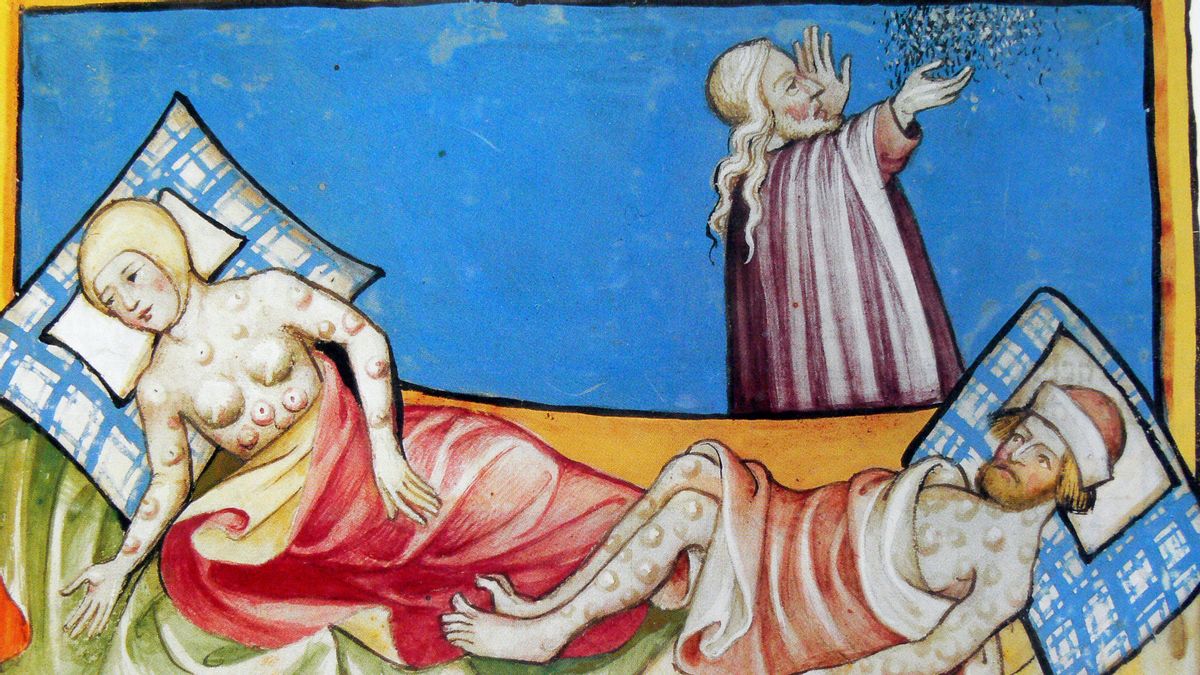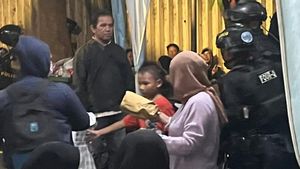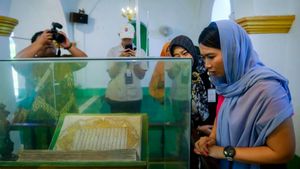JAKARTA - “Perhaps, the rapid and successive deaths from scheurbuik (vitamin C deficiency) since departing from the Port of Texel last year, as well as the zwarte dood (bubonic plague) outbreak at a stop in Madagascar, have turned our hearts to tasteless, cold and hard. . "
Iksaka Banu tries to reproduce a series of fears related to the bubonic plague or what is known as black death in his book, All for the Indies (2014). This description is inserted in one of the stories entitled "The Sower of the Seed". Life is so cheap in front of black death.
It is there that it is told how fear struck the people who wanted to sail to the archipelago. The black bubonic plague, which killed a third of Europe's population in the 14th century, is the cause.
Even so, actually that number was nothing. When referring to the combined death toll from bubonic plague events that occurred simultaneously from Asia, India, the Middle East and China, the death toll from the black bubonic plague pandemic reached 75 million.
At that time, black bubonic plague sufferers were easy to see because generally the sufferers would experience tissue death on the tips of the fingers, toes and nose. The putrefaction marks those parts of the body black. In the medical world, this type of bubonic plague is called a septicemic plague. It attacks the bloodstream, I see.

Apart from the septicemic plague, another type of bubonic plague that was also known at that time was the bubonic plague. This type of plague attacks the lymphatic (immune) system. Another type of bubonic plague attacks the lungs. It is named the pneumonic plague. Of all, the septicemic plague remains the deadliest.
How come. Black bubonic plague sufferers are said to die immediately, even before symptoms appear. Even if a person experiences symptoms, he will feel great pain and fear. Symptoms of black bubonic plague are marked by bleeding, blackening of several parts of the body, abdominal pain, diarrhea, fever, weakness, and vomiting. Iksaka Banu described this terrible condition.
“Some people lying in sick cabins even hope to quickly disappear from the face of the earth because they know that no one can take care of them anymore. As for those of us who are still standing, it seems that we are just waiting our turn before contracting or dying, ”he wrote.
In Nusantara Land
The feeling of "waiting their turn before contracting or dying" has also haunted people on Mother Earth in the 20th century. At that time, the bubonic plague began to enter Malang, before then spreading to other areas, such as Semarang and Yogyakarta.
Because of the speed, the spread of the bubonic plague from 1910-1939 took 39,254 lives in East Java and 4,535 in Yogyakarta. The worst is Central Java. On that land, black plague killed 76,354 people.
It doesn't stop there. The bubonic plague continues to spread to the western part of Java. In the 1920s, the pes began to attack Cirebon, Priangan and Batavia. The resulting death rate was large. From the plague period of 1933-1935, black plague claimed 69,775 lives in West Java.
As a result, the colonial government lost many workers and unskilled laborers whose energy they used to use in plantations, mineral mining, and road construction. The colonial government, which previously experienced this epidemic in Europe, moved to address the black plague outbreak.

From a political economy perspective, the black pes had a major impact on the shrinking of Dutch cash flows. In another sense, the black plague plague was very threatening to the existence of the Dutch East Indies at that time. The colonial government finally ordered the Public Health Service or Geneeskundige Dienst (BGD) to establish a pes eradication program.
Eradication was not only carried out in Batavia. At that time, the responsibilities were taken directly by the respective regions. All health workers, ranging from mantri, nurses - local and European - to doctors from Java were sent to remote villages to check on black bubonic plague patients.
However, the eradication efforts by the colonial government were in chaos. In fact, many European doctors in Batavia refused to treat bubonic patients who were mostly indigenous. M. Balfas, in a book entitled Dr. Tjipto Mangoenkoesoemo: Democrat Sedjati (1952) told, "Many European doctors who worked for government agencies refused to be sent to the Malang area."
Doctor Tjipto Mangunkusumo is one of the called medical personnel. He participated in the effort to eradicate bubonic plague in Malang with other STOVIA-graduated Javanese doctors. The presence of Tjipto and his friends was able to cover up the absence of European doctors who were considered spoiled and rarely made visits to villages.
Moreover, at that time one of the causes was class disparities and racial sentiments that made white doctors reluctant to touch native patients. The humanist story of Tjipto was co-written by historian Takashi Shiraishi in an article entitled "Their Dreams are Still with Us" in the book 1000 Tahun Nusantara (2000). Takashi Shiraishi said:
For example, he was given the Ridderkruis of the Oranje Nassau Order by the Dutch government because of his work as a doctor in Malang facing the bubonic plague in 1912. However, he also gave himself a token of service by adopting a baby girl who was orphaned in the plague. , and named it Pesjati.
Tjipto's move deserves appreciation. However, the bubonic plague spread throughout the archipelago and managed to cause great panic. In fact, at that time there was an opinion regarding the way the colonial government handled the bubonic plague, that the colonial government's efforts to eradicate bubonic plague were more terrible than the disease itself.
The English, Chinese, Japanese, Arabic, and French versions are automatically generated by the AI. So there may still be inaccuracies in translating, please always see Indonesian as our main language. (system supported by DigitalSiber.id)










